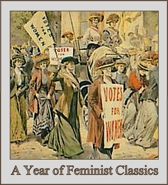Reviewed by Ingrid
Published: 2009
It's about: This book explores the inner workings of the contemporary art world within seven different spheres (one each "day"): The Auction (an art auction at Christie's,) The Crit (how art criticism is taught at an LA art school,) The Fair (an art fair put on by dealers in Basel, Switzerland,) The Prize (how the famous Turner Prize is judged at the Tate Britian in London,) The Magazine (how Artforum is put together, how it is recieved in the art world,) The Studio Visit (a visit to the many studios of Japanese artist Takashi Murakami,) and The Biennale (a huge international exhibition in Venice.)

I thought: I'm a big fan of contemporary art, so I enjoyed reading this book. Thornton does a great job in approaching a notoriously difficult subject. In each of her seven "days" Thornton interviews the major players at each event, including the collectors, dealers, and artists themselves (including one of my favorites, Ed Ruscha.) Her writing style is comfortably neutral - not to stuffy, wordy, or witty (seems like many of these sorts of non-fiction books try too hard to be funny.) Thornton has studied both art history and sociology, and claims that this book "should be a readable hybrid of their different concerns." I think she did a great job.
Verdict: Put it on the shelf.
Reading Recommendations: This book would probably be most enjoyable for those who are interested in art, I would say.
Favorite excerpts:
"In some MFA programs, a crit consists of five experts telling a student what they think about his or her work. In crits at the L.A. art schools, students do most of the talking while instructors bear witness. Group critiques offer a unique--some say 'utopian'--situation in which everyone focuses on the student's work with a mandate to understand it as deeply as possible. Crits can also be painful rituals that resemble cross-examinations in which artists are forced to rationalize their work and defend themselves from a flurry of half-baked opinions that leave them feeling torn apart. Either way, crits offer a striking contrast to the five-second glance and shallow dollar values ascribed to works at auctions and fairs. Indeed, crits are not normally considered art world events, but I think that the dynamics in this room are vital to understanding the way the art world works."







